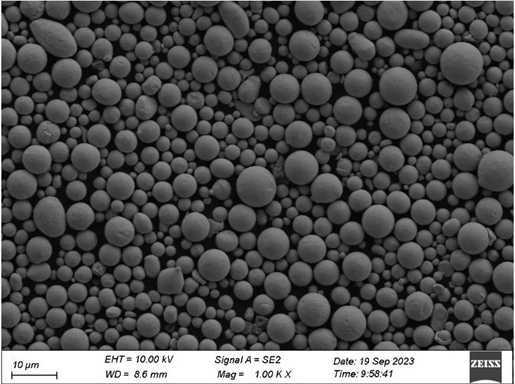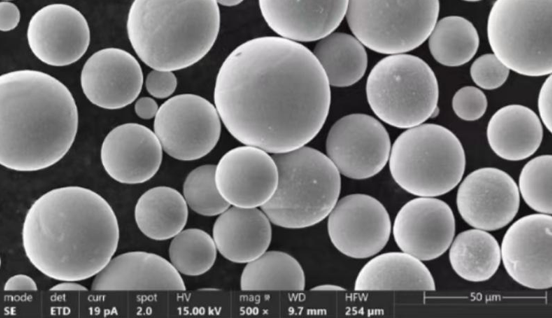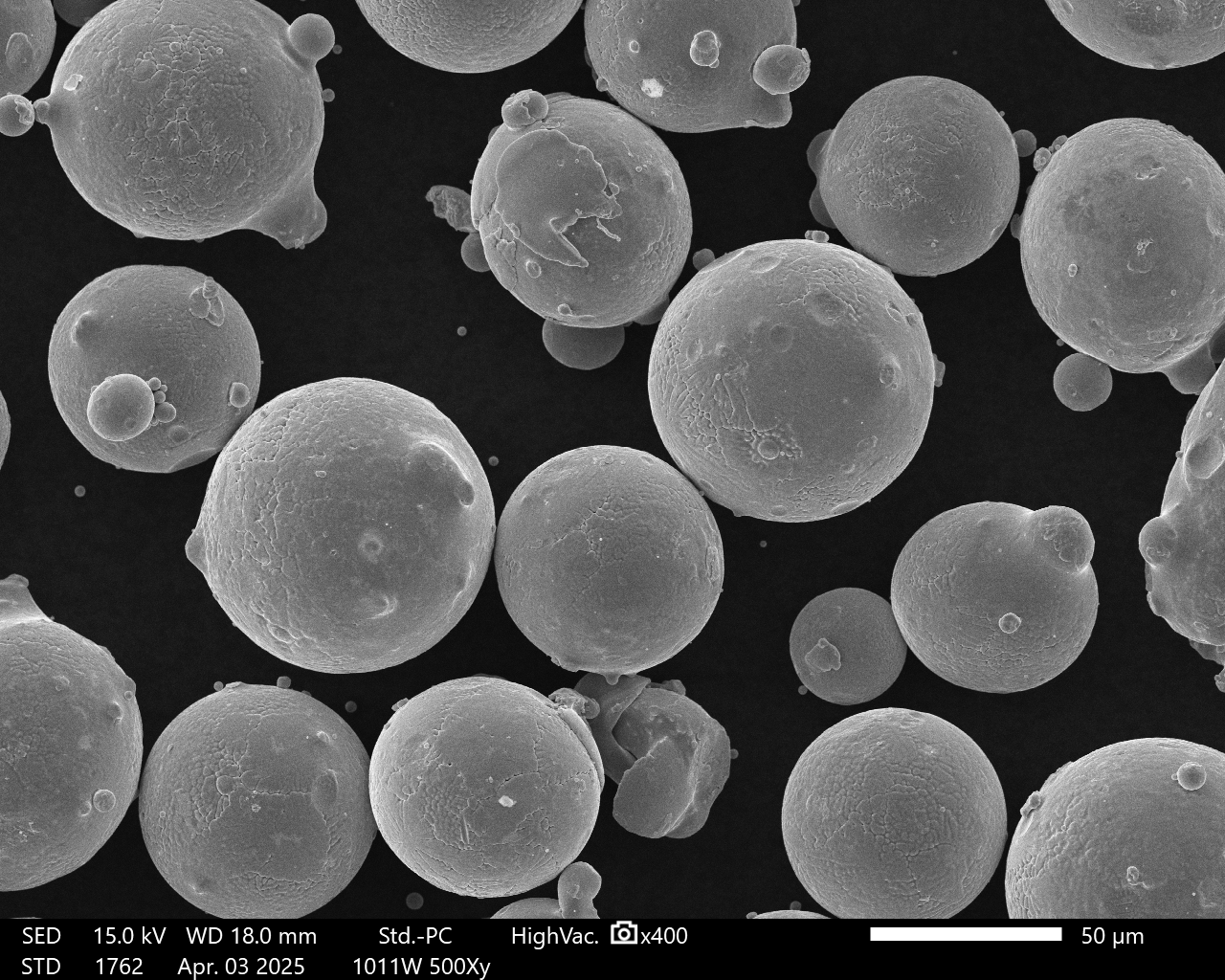Atomized metal powder is a form of metal produced by atomization, a process that turns molten metal into very fine powder. This powder has unique properties that make it useful across various industries and applications.
Overview of Atomized Metal Powder
Atomized metal powder is characterized by:
- Very fine particle size, usually under 100 microns
- Large surface area
- Flowability
- Ability to be compacted into high density parts
- Consistency in composition
- Spheroidal particle shape
These properties allow atomized powders to be used in various metal processes like metal injection molding, additive manufacturing, and pressing and sintering. The fine size and shape contribute to improved performance.
Atomized metal powders come in a wide variety of alloys including:
- Steel
- Aluminum
- Copper
- Nickel
- Titanium
- Precious metals
They are commonly used for automotive parts, cutting tools, structural components, electrical contacts, magnets, jewelry, and more.
Atomized Metal Powder Types
| Type | Description | Composition | Particle Size | Shape |
|---|---|---|---|---|
| Ferrous | Made of iron, steel alloys | Stainless steel, alloy steel, tool steel | 10-150 μm | Spherical |
| Non-ferrous | Made of non-iron metals | Copper, aluminum, titanium alloys | 5-250 μm | Rounded |
| Precious | Made of precious metals | Silver, gold, platinum | 1-100 μm | Spherical |
Key Properties
Atomized metal powders have unique properties that make them advantageous for manufacturing:
- High purity: Controlled composition without contaminants
- Consistency: Narrow particle size distribution
- Shape: Mostly spherical for good flow and packing
- Density: Can compact to near full density when pressed
- Reactivity: Large surface area allows improved sintering
Common Applications
Atomized metal powder is used across many industries:
- Automotive: Engine parts, gears, bearings
- Aerospace: Turbine blades, airplane fittings
- Medical: Dental implants, prosthetics
- Additive manufacturing: 3D printing powders
- Jewelry: Precious metal powder for making jewelry

Composition of Atomized Metal Powder
Atomized powders come in a wide variety of metal alloys with tailored compositions to achieve certain properties. Some common compositions include:
Steel Atomized Powders
| Type | Main Alloy Elements | Example Compositions |
|---|---|---|
| Stainless steel | Fe, Cr, Ni | 304, 316, 420 |
| Tool steel | Fe, Cr, V, Mo | H13, M2 |
| Alloy steel | Fe, Mn, C, Cr, Ni | 4140, 4340 |
Non-Ferrous Metal Powders
| Type | Main Alloy Elements | Example Compositions |
|---|---|---|
| Aluminum | Al, Cu, Mg, Si | 6061, 7075 |
| Copper | Cu, Sn, P | C11000, C17200 |
| Nickel | Ni, Cr, Fe, Mo | Inconel 625, Monel 400 |
| Titanium | Ti, Al, V, Sn | Ti-6Al-4V, Ti-6Al-2Sn-4Zr-6Mo |
Manufacturers can customize compositions as needed for required properties. Powders also contain trace additives (<1%) like boron, zirconium, and carbon to enhance sintering, strength, or other qualities.
Atomized Metal Powder Composition Specifications
| Parameter | Description | Range |
|---|---|---|
| Main elements | Major alloying elements | Varies by alloy type |
| Minor elements | Trace elements added | < 1% by weight |
| Oxygen content | Oxygen picked up during atomization | <0.5% by weight |
| Moisture content | Residual moisture after production | <0.1% by weight |
| Apparent density | Powder packing density | 40-65% of material density |
Compositions are verified by spectrographic analysis and other methods. Custom blends possible.
Properties of Atomized Metal Powder
The unique properties of atomized metal powder make it well suited to industry applications:
Physical Properties
| Property | Description | Importance |
|---|---|---|
| Particle shape | Mostly spherical | Improves powder flow and packing |
| Particle size | 10 – 150 μm typically | Affects reactivity, density, surface finish |
| Particle size distribution | Narrow distribution | Allows homogeneous mixing and compacting |
| Apparent density | Loose powder density | Impacts quantity measurement |
| Tap density | Settled powder density | Indicates compressibility |
| Flow rate | Powder flowability | Important for automated processing |
| Specific surface area | Particle surface area per unit weight | Determines reactivity and sintering response |
Mechanical Properties
| Property | Description | Importance |
|---|---|---|
| Hardness | Resistance to deformation | Needed for wear resistance |
| Strength | Tensile and yield strength | Required for load bearing applications |
| Ductility | Ability to deform before fracturing | Impacts durability and toughness |
| Porosity | Tiny holes in compacted parts | Reduces with increased pressing density |
Properties are controlled through strict composition standards and manufacturing protocols.
Characteristics of Atomized Metal Powder
Atomized powders have unique characteristics that dictate performance:
Particle Size
- Typical range is 10-150 microns
- Narrow distribution ensures uniformity
- Finer sizes improve density and surface finish
- Coarser sizes improve flow and permeability
Particle Shape
- Predominantly spherical morphology
- Enhances powder flow and compaction
- Produced by disruptive forces during atomization
Surface Morphology
- Relatively smooth particle surface
- Has satiny metallic luster
- Surface imperfections increase with larger sizes
- Some satellites possible
Internal Structure
- Homogeneous phases
- Consistent chemistry throughout
- Composition verified by sampling
- Lack of porosity or voids
Controlling these particle attributes allows customization of powder behavior.
Atomized Metal Powder Characteristics Specifications
| Parameter | Description | Typical Range |
|---|---|---|
| Particle size | Diameter of powder particles | 10 – 150 μm |
| Size distribution | Span of particle sizes | ±40 μm from average |
| Particle shape | Geometry of powder | Sphericity >90% |
| Surface texture | Smooth or rough surface | Moderate glossy |
| Apparent density | How loosely powder packs | 40-65% of true density |
| Tap density | Settled density after vibration | 55-72% of true density |
| Flow rate | Powder flow speed | 25-35 s/50 g |
| Oxide content | Surface oxides from production | <1% by weight |
-
 Inconel 713LC Nickel Alloy Powder
Inconel 713LC Nickel Alloy Powder -
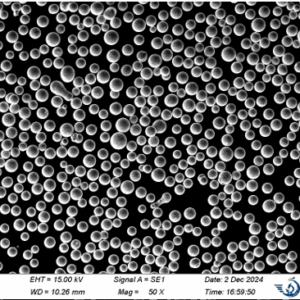 CM247LC Powder | Nickel Alloy Powder
CM247LC Powder | Nickel Alloy Powder -
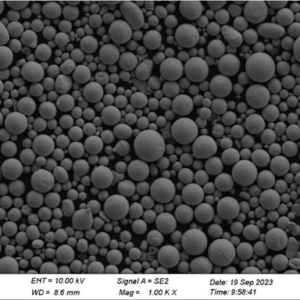 0# Pure Nickel powder
0# Pure Nickel powder -
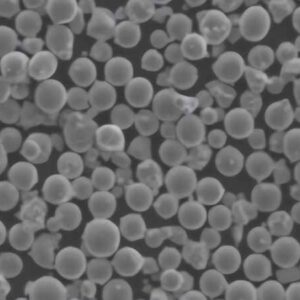 NiCoCrAlY alloys powders
NiCoCrAlY alloys powders -
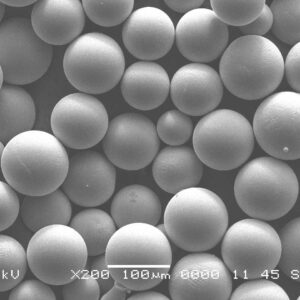 Rene 142 alloy-Rene Powder
Rene 142 alloy-Rene Powder -
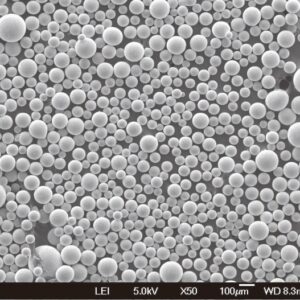 Haynes 25 Haynes Powder
Haynes 25 Haynes Powder -
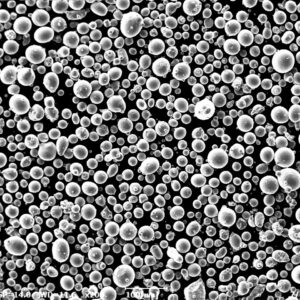 Best Hastelloy C-22 Powder-High temperature alloy Powder for 3D Printing
Best Hastelloy C-22 Powder-High temperature alloy Powder for 3D Printing -
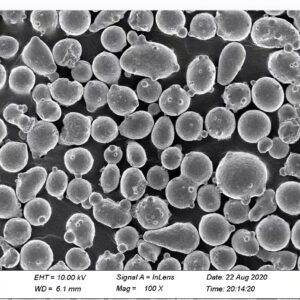 Best Hastelloy C-276 Powder-High temperature alloy Powder for 3D Printing
Best Hastelloy C-276 Powder-High temperature alloy Powder for 3D Printing -
 Best Hastelloy N Powder-High temperature alloy Powder for 3D Printing
Best Hastelloy N Powder-High temperature alloy Powder for 3D Printing
Applications and Uses of Atomized Metal Powder
Thanks to its unique properties, atomized metal powder has many uses across industries:
Automotive
- Gears
- Bearings
- Connecting rods
- Supercharger rotors
Aerospace
- Turbine blades
- Structural parts
- Aircraft fittings
Additive Manufacturing
- 3D printing powders
- Binder jet printing
- Selective laser sintering
Industrial
- Cutting tools
- Drill bits
- Welding rods
- Permanent magnets
Medical & Dental
- Dental implants
- Medical implants
- Surgical instruments
Electronics
- Conductive contacts
- Resistors
- Cores and terminations
Luxury Goods
- Jewelry
- Decorative hardware
- Luxury pens
- Coins
Atomized metal powder provides the performance, consistency and precision needed in advanced manufacturing across industries.
Suppliers and Pricing of Atomized Metal Powder
There are many suppliers offering various metal powder varieties:
Major Atomized Metal Powder Companies
| Company | Location | Materials Offered | Description |
|---|---|---|---|
| Höganäs | Sweden | Iron, stainless, alloys | Global leader in metal powders |
| Sandvik | Sweden | Stainless, superalloys, titanium | Leading atomization technology |
| Rio Tinto Metal Powders | Canada | Aluminum, nickel, iron | Diverse alloy atomization |
| CRS Holdings | USA | Copper and copper alloys | Specializes in copper powder |
| Advanced Powders & Coatings | USA | Refractory metals, superalloys | High performance alloys |
Pricing depends on alloy composition, quality standards, particle size, and order volume:
Atomized Metal Powder Pricing
| Material | Alloy Type | Particle Size | Price per kg |
|---|---|---|---|
| Stainless steel | 316L | 15-45 μm | $12-18 |
| Tool steel | H13 | 10-100 μm | $15-25 |
| Aluminum alloy | 6061 | 45-150 μm | $8-15 |
| Nickel alloy | Inconel 718 | 10-45 μm | $50-150 |
| Titanium alloy | Ti-6Al-4V | 15-45 μm | $80-220 |
Prices decrease significantly with order size. Custom alloys are also available.
Pros vs Cons of Atomized Metal Powder
Atomized powder has some clear advantages but also limitations:
Advantages
- Consistency in composition and properties
- Near full density achievable
- Excellent mechanical characteristics
- High production rate by atomization
- Used in advanced manufacturing methods
Disadvantages
- Higher cost than conventional manufacturing
- Limited to smaller part sizes
- Post processing often required
- Some porosity possible in finished pieces
- Restricted number of alloys and volumes
The benefits often offset the downsides for industries demanding precision, performance, and state-of-the-art materials.
How Atomized Metal Powder is Made
Metal powders are produced through atomization technology. The processes involve:
Steps in Atomized Metal Powder Production
Melting
- Metals are charged into an inert furnace (vacuum or with protective gas)
- Heating above liquidus temperature to melt the metals
- Precise control of temperature, time cycles
Alloying
- Additional elements like carbon or boron are dissolved into molten bath
- Achieves target chemical composition for the alloy
Coarse Filtering
- Ceramic foam filters remove inclusions and large contaminants
- Reduces defects in final atomized powder
Atomization
- Pressurized inert gas disintegrates molten metal into fine droplets
- Various nozzle designs for specialized atomization
- Different gases yield distinct powder characteristics
Powder Collection
- Inert gas carries powder to collection system
- Cyclone separators retain fine powder particles
- Prevent oxidation from exposure to air
Screening
- Multi-step classification system separates particle sizes
- Achieves narrow distribution of powder fractions
Conditioning
- Degassing, drying, or lubricant mixing done if needed
- Removes adsorbed gases or moisture before further processing
The inert environment, specialized equipment, and comprehensive controls result in high purity, spherical, precise metal powders ready for commercial applications.
Metal Powder Atomization Methods
There are several technical variations for atomizing molten metal alloys into powders:
Atomization Methods
| Method | Details | Particle Size | Shape |
|---|---|---|---|
| Gas atomization | Uses high pressure inert gas | 5-250 μm | Mostly spherical |
| Water atomization | Breakup with water jets | 50-1000 μm | Irregular rugged |
| Vacuum atomization | Molten stream into vacuum chamber | 50-150 μm | Coarser spherical |
| Centrifugal atomization | Spinning disk disperses metal | 50-1000 μm | More irregular |
Gas atomization is widely used today given its fine sizes and spherical particle morphology. But other variations serve specialized applications like precious metals or particular alloys and conditions. The atomization technique impacts powder characteristics significantly.
Standards for Atomized Metal Powder
Various standards apply to atomized metal powders:
Powder Quality Standards
| Standard | Purpose | Key Criteria |
|---|---|---|
| MPIF Standard 35 | Ferrous powder specifications | Chemistry, particle size distribution, apparent density |
| MPIF Standard 45 | Non-ferrous powder standards | Particle characteristics, impurity limits |
| ISO 4490-1 | Nickel and iron powders classification | Methodology to quantify powder attributes |
| ASTM B602 | Metal powder characterization tests | Tap density, flow rate, compressibility methods |
| ASTM B215 | Sampling procedures | Powder sampling techniques |
These help define product specifications, testing protocols, classification systems, quality control and more. Both global and material-specific standards apply.
Powder Production Standards
| Standard | Purpose | Key Criteria |
|---|---|---|
| ISO 9001 | Quality management | Administration, supplier standards, traceability |
| ISO 14000 | Environmental management | Energy use, waste reduction, conservation |
| OHSAS 18001 | Occupational health/safety | Exposure controls, safety equipment and training |
| ISO 17025 | Laboratory practices | Methods, assaying procedures, calibration protocols |
Powders also adhere to various company-specific quality certifications. Review all specifications before sourcing a product.
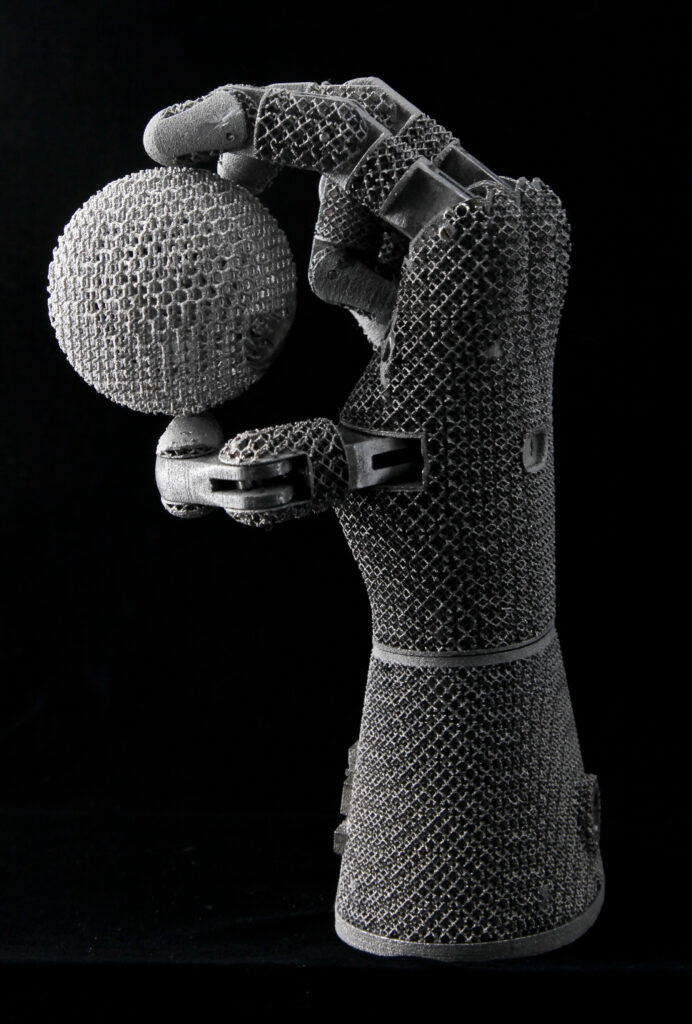
FAQ
What are the benefits of atomized metal powder?
Atomized powder provides extremely consistent composition, particle characteristics, high purity, and performance properties demanded by advanced manufacturing techniques.
What precision can be obtained with atomized metal parts?
Precision within 0.1 mm is possible for small production runs of under 100 parts. However, precision declines above 250 parts and tolerances over ±0.5 mm are more realistic.
What effects does atomization have on metal microstructure?
The rapid solidification during atomization generates finer grains and extends solid solubility limits. This allows unique alloys and properties. But it also causes higher internal stresses.
What alloys are available with atomized powder?
Hundreds of steel, aluminum, copper, nickel, titanium, and precious alloys are produced as atomized powder today. Both common commercial alloys as well as high performance grades for aerospace, energy, electrical and other sectors are available. Custom alloys can also be atomized on request.
What is the typical supply chain for atomized metal powder?
Most major metal powder companies manufacture powder directly in their vertically integrated mills before passing through distributors to end users like part fabricators or 3D printing service bureaus. Some distributors may stock select commodity grades readily but custom orders can take months. Plan procurement cycles accordingly based on internal usage forecasts.
Is recycled metal powder available?
Yes, recycling programs are offered for many common alloys and Laser Powder Bed printing powders. The used powder is reconditioned to remove contamination before being re-atomized and resold. However, properties won’t match virgin material. Recycled powder is cheaper but best suited to prototype development versus production.

